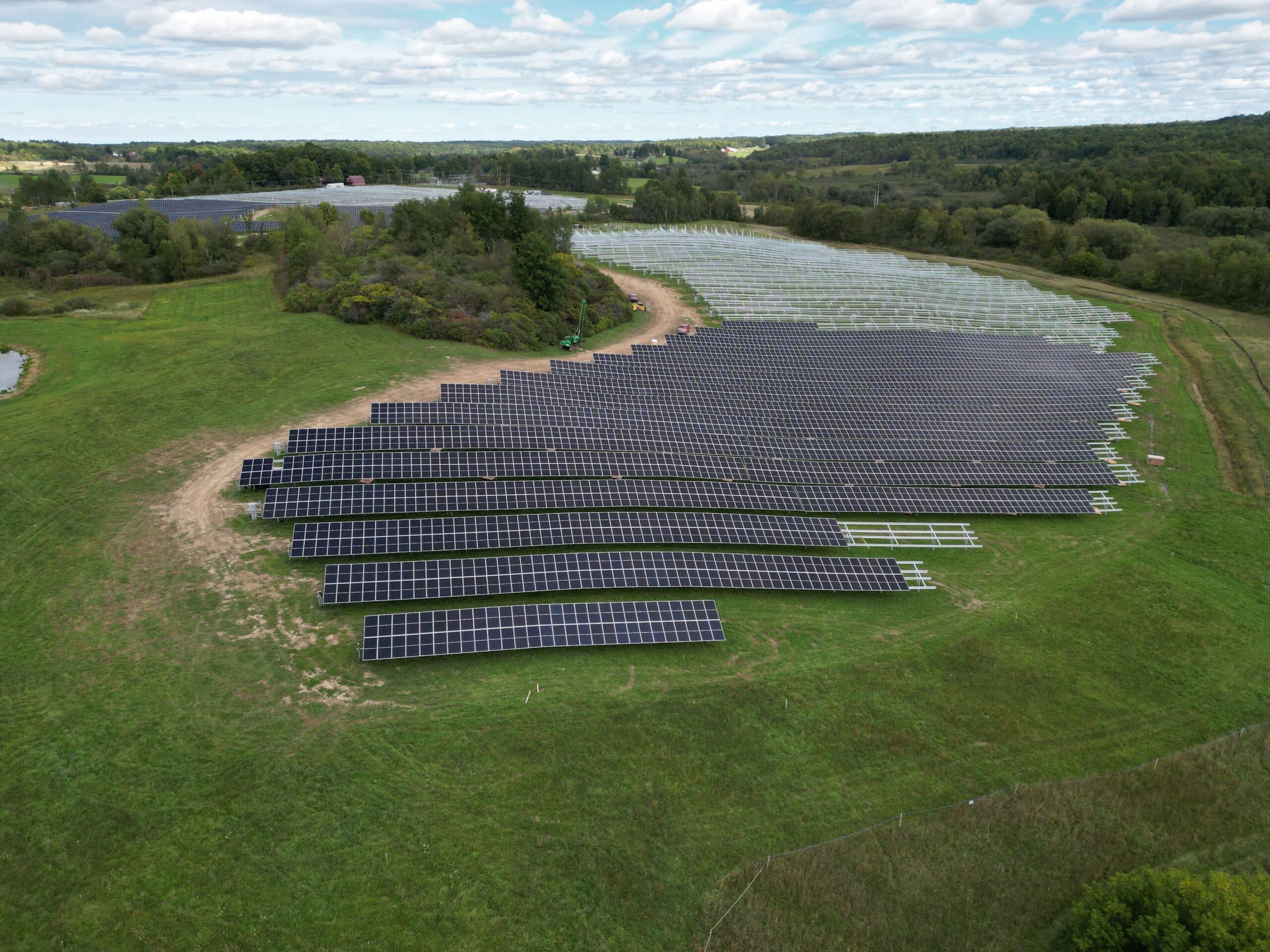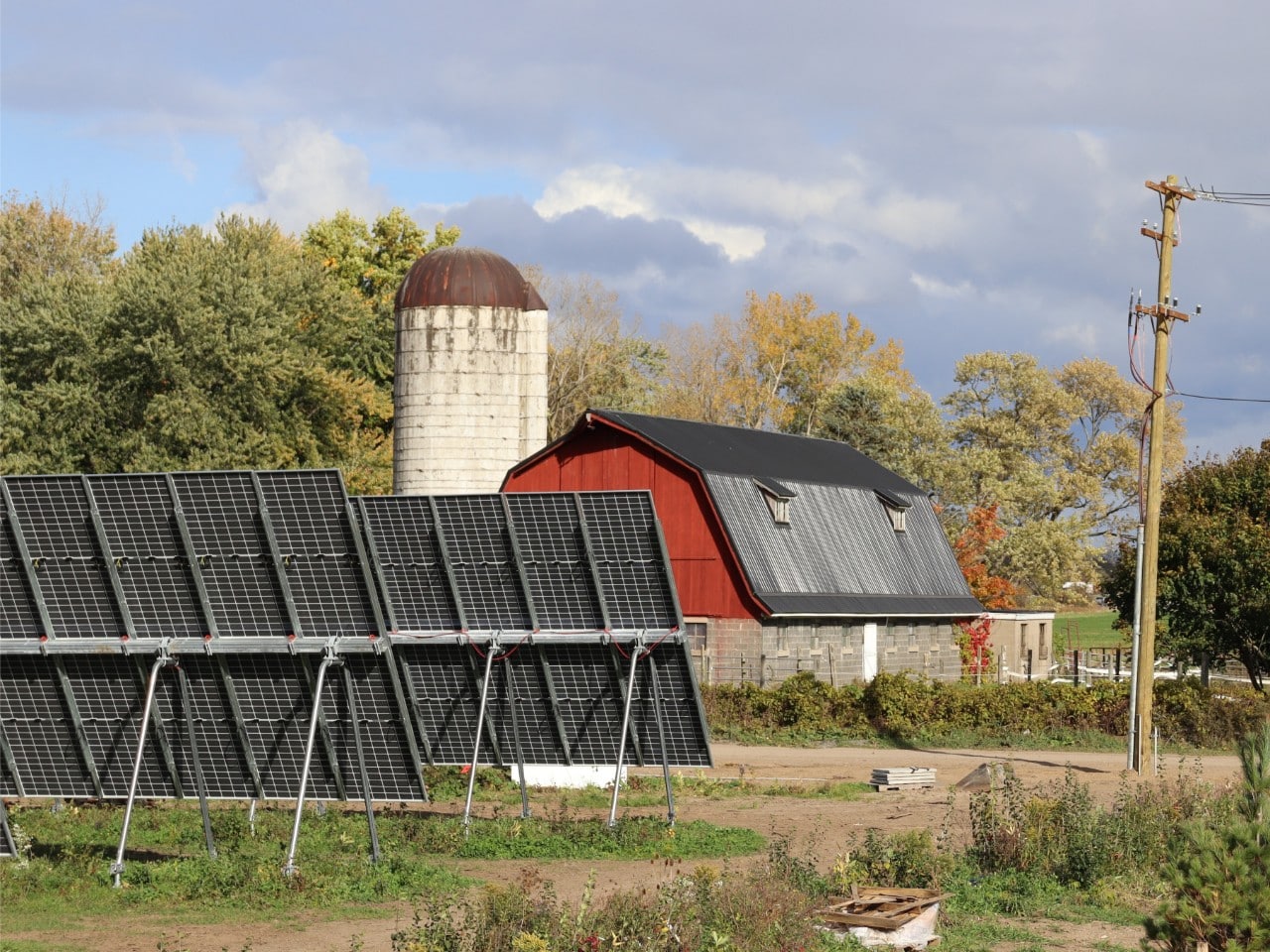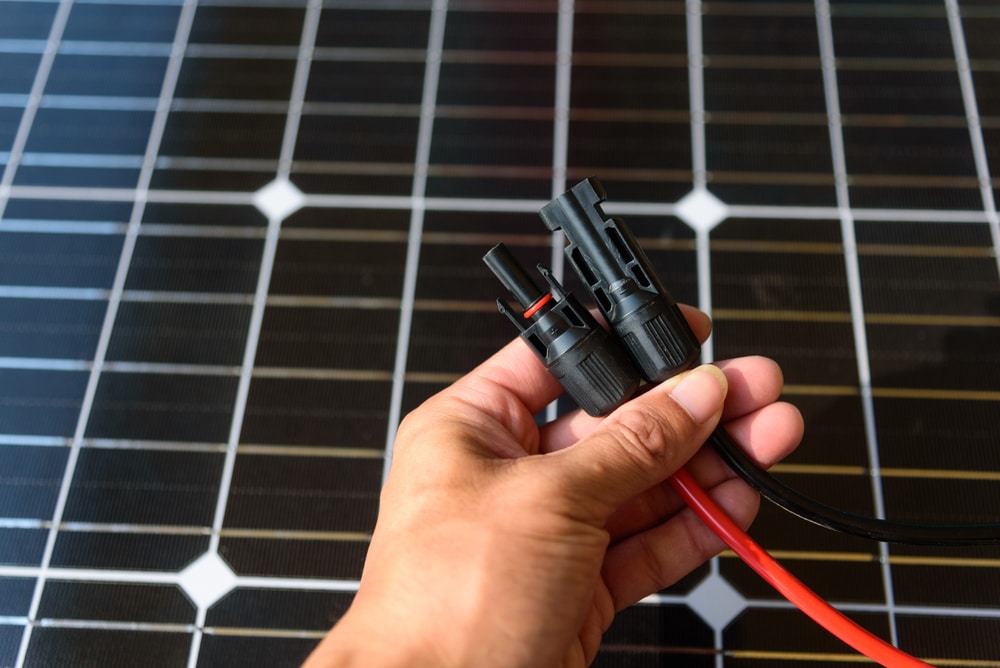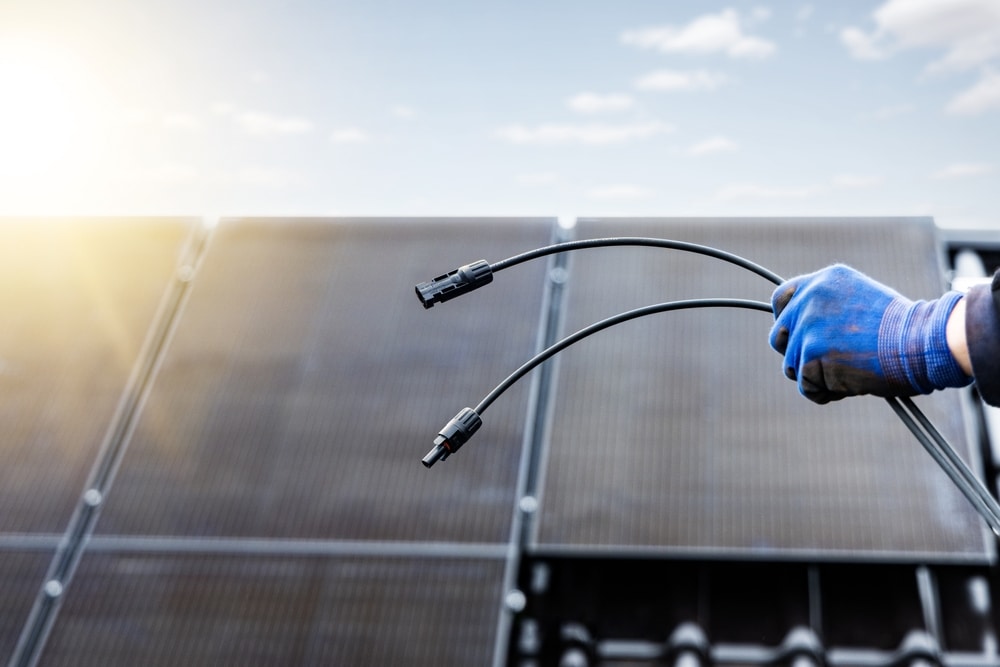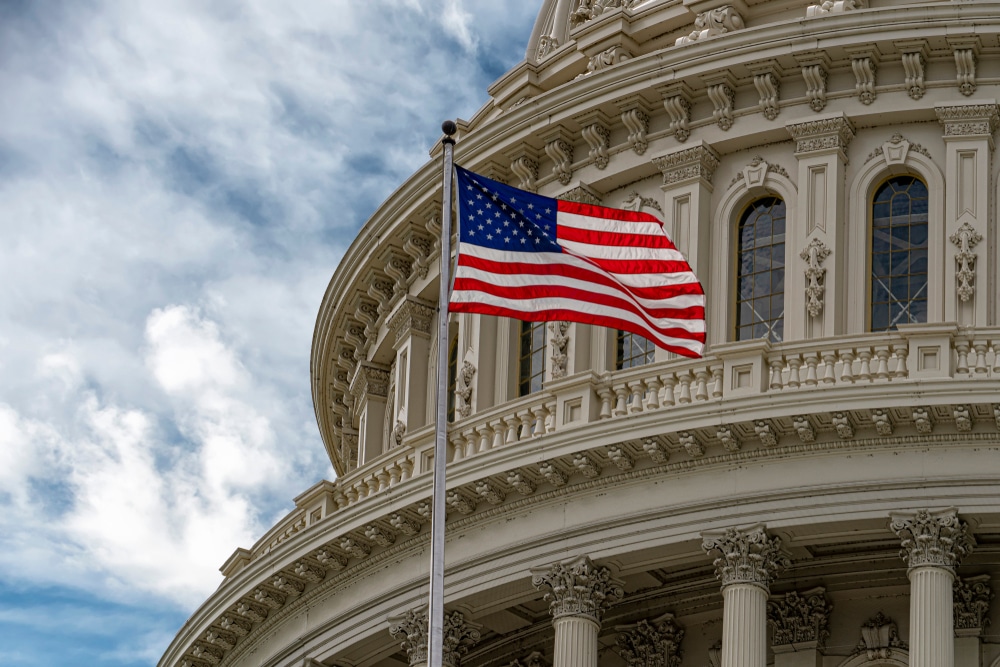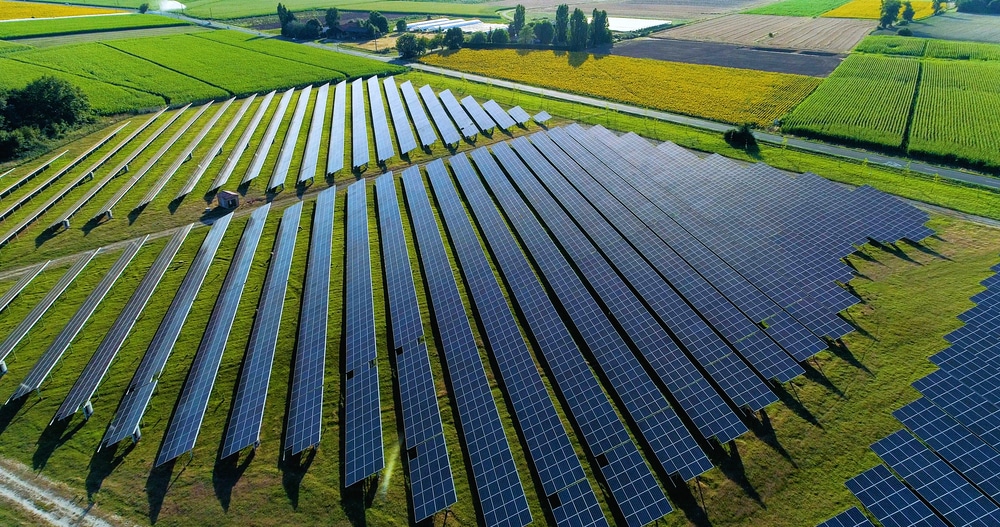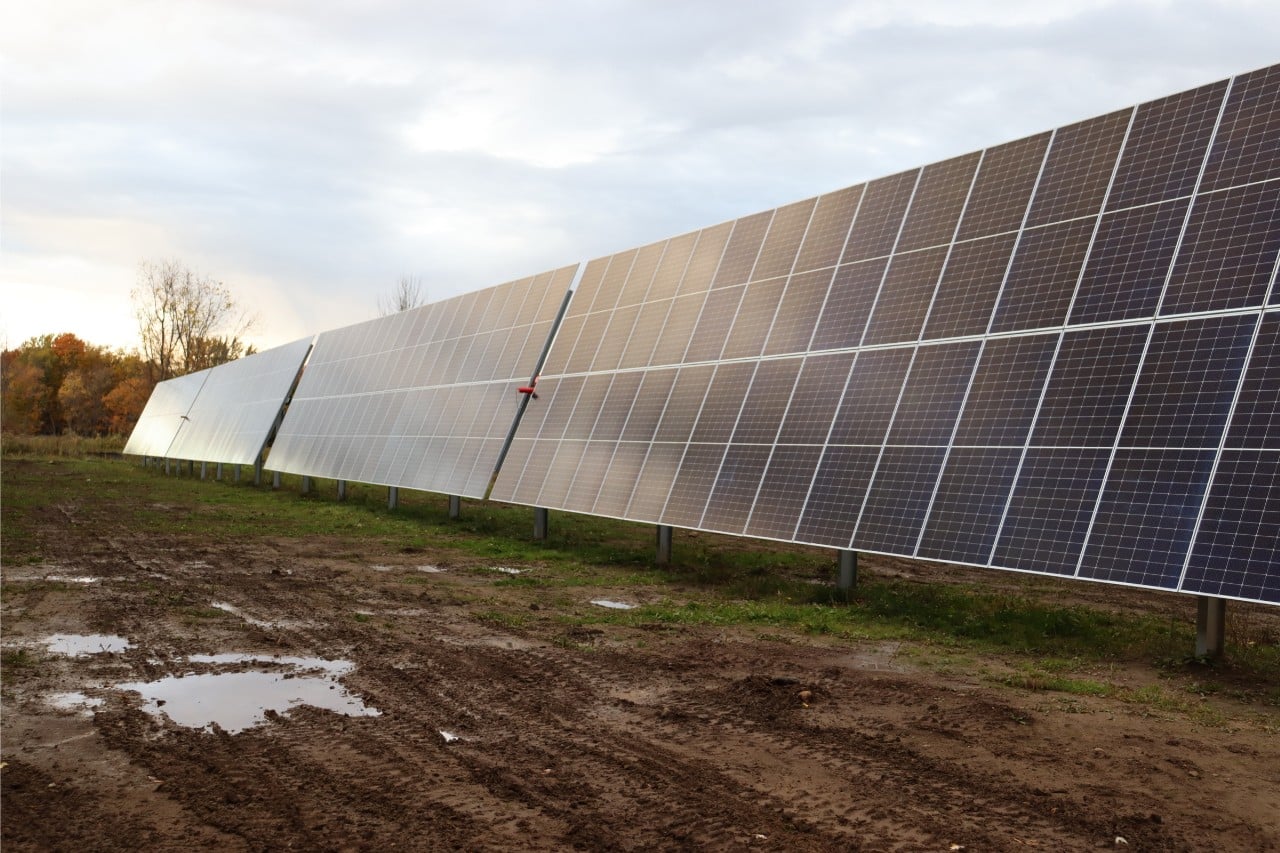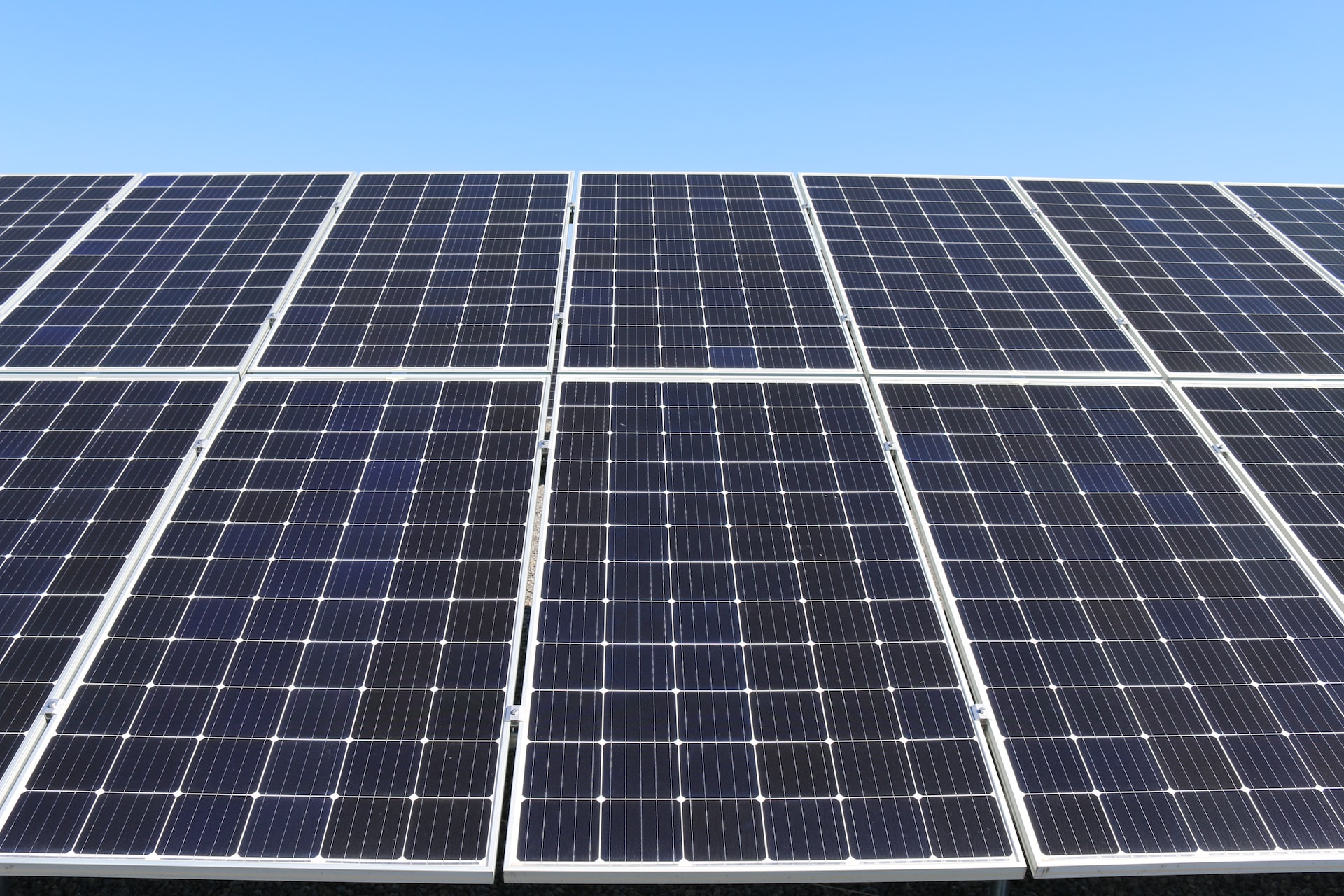When most people think about solar installations, two types generally come to mind: rooftop and utility-scale.
Rooftop or backyard residential PV solar panels provide enough electricity to power a home or small business. Meanwhile, utility-scale operations are designed to power towns, cities, and even regions.
But there’s a third option emerging in the U.S.: community-scale solar. Larger than residential but smaller than utility-scale, community-scale installations range from a few megawatts to tens and power communities.
Small Footprint, Large Impact
True to its name, community solar projects are small, usually less than 5MW, but can generate enough electricity to power thousands of homes.
Unlike utility-scale solar locations, which utilities develop on owned land, community solar farms live on leased land and get installed by EPC (Engineering, Procurement, and Construction) solar companies like Schuler-Haas, Nexamp, and TerraForm. Once complete, residents and businesses can subscribe to the site and receive credits.
Smaller solar arrays are picking up steam in several states, including New York, California, Minnesota, and Massachusetts, but can be found in more than 40 states, Washington D.C., and Puerto Rico. Although solar installations were down 16% in Q2 2023 compared to 2022, about 226 MWdc of solar was added to the grid.
The good news is the Solar Energy Industries Association (SEIA) expects growth from 2024 through 2028, thanks to better policies and more interest.
How Does Community Solar Work?
Community-scale solar is unique in size and operation, making it viable for people who can’t fully invest in solar but want to participate.
Unlike installations owned by a single person, business, or utility company, community solar projects benefit groups of businesses and individuals throughout the service area. They can either pay to own a portion or subscribe to a community solar installation, allowing them to collect solar credits on their electricity bills.
But what are solar credits, and how do they work? As the solar array generates electrical power, subscribers and owners collect credits based on the electricity produced. Those credits are then applied to their utility bills.
According to the NREL, about 49% of households and businesses can’t have rooftop solar. For those who can’t afford a residential PV system or don’t have the right conditions to support one, community solar is an option.
Even better, the energy produced by community solar goes straight from the array to the grid and is delivered directly to those living nearby.
Is Community Solar Worth It?
With all the talk of subscriptions and credits, community solar sounds complicated, but it’s a popular choice for consumers and builders for several reasons.
- Accessibility: Community solar allows people to invest and benefit from solar installations with a low-risk investment. They still reap the rewards of solar power without the massive upfront purchase to install panels.
- Cost savings: Community solar is a low-cost electricity producer compared to traditional fossil fuels.
- Supports the local community: Solar installations create jobs and can support sustained regional economic growth.
- Varies energy sources: Renewables can support traditional fossil fuels during periods of high demand. They can also help supply power in the case of an emergency when fossil fuel sources are offline. Solar arrays also help develop microgrids, which limit the spread of blackouts if a problem arises.
- Cleaner energy: Solar panels produce no by-products, and the sun is an infinite fuel source. Energy storage and consistent production are still troublesome, but the technology needed to address and mitigate those problems is quickly evolving.
Of course, not everything is perfect. Every investment, including community solar, has inherent risks.
Drawbacks and Concerns
Despite renewable energy projects earning the praise of agencies, organizations, and the public, every emerging technology has its fair share of challenges. It’s especially true when attempting to integrate them into older installations.
- Interconnection Issues: According to a 2022 White House statement, about 70% of U.S. transmission lines are 25 years old or older, with many pieces coming online in the 1960s and 1970s. Unfortunately, that makes it harder for solar installations to integrate. In those situations, the difficulty of integrating leads to expensive delays, long waiting lists, and high connection fees to cover costs.
- Overpowering the system: Substations are designed to handle occasional overcharges or power surges, but not constantly. When a massive influx of electricity is added to the grid too quickly, it can lead to outages and damage.
- Location issues: In rural communities, solar installations may be miles from load centers. Getting power to the load center for distribution means more money, time, and labor is needed. These costs ultimately lead to a higher project cost and delayed ROI.
- Storage Issues: Solar energy is infinitely renewable but hard to store. Effective battery solutions are available but are expensive, and the technology hasn’t reached its full potential yet. Storage also becomes an issue in places where the sun isn’t shining every day and locations where snow is an issue.
As technology improves and more utilities invest in renewable technology, it will become easier to interconnect with the larger grid. In the meantime, smaller installations can create microgrids that connect to the larger grid but reduce the effects of an outage in their communities.
What is the Growth Potential?
Thanks to several pieces of federal legislation, solar and other renewable energy sources are having a coming out party.
Solar has accounted for about 45% of all new electricity-generating capacity added to the electrical grid this year, including 226 MWdc of community solar in Q2 2023. The good news doesn’t end there, as experts claim more advancements are coming.
Global research organization Wood Mackenzie recently touted the strength of community solar, suggesting the industry could grow nearly 120% through 2027. The report also notes that the country could add another 6 GW of electricity to the grid by then. Currently, about 5.27 GW has been installed.
Several states are leading community solar solutions, including New York, which hosts about half of the U.S.’s installed total. However, new laws, including the Inflation Reduction Act (IRA), have put solar in a much stronger position in the coming years.
The IRA coincides with a 24-month moratorium issued by the White House on solar panels from four Asian countries: Thailand, Vietnam, Malaysia, and Cambodia. The moratorium expires in June 2024 and is designed to help get domestic solar production off the ground while giving companies and utilities access to lower-cost solar panels to complete ongoing projects.
Domestic production is expected to improve for balance of system products like PV wire, panels, and racking materials, and organizations like Wood Mackenzie and the SEIA are confident the industry will flourish.
High Potential, Low Cost of Entry
There are plenty of tax credits and incentives to get people involved with residential solar, but barriers to entry are still high. Options like community solar reduce investment costs while helping people do something good for the community, the environment, and their wallets.
It also comes in handy for people living in low-income and rural areas, where credits can impact how much they pay for the electricity they consume. Rural locations also tend to have more space for solar installations, shortening the distance from the array to a load center.
The benefits of community solar are undeniable, but there are still hurdles. Our electrical grid is rapidly aging, making it difficult to efficiently interconnect with existing substations and other infrastructure. If the substations and grid technology are too old, it will be harder to integrate efficiently.
We’re getting closer to a world run by renewables. More advancements mean more opportunities for good-paying jobs, low-cost electricity, and better resilience in the face of storms and other emergencies. It will take time, but a renewable-powered future is possible.


